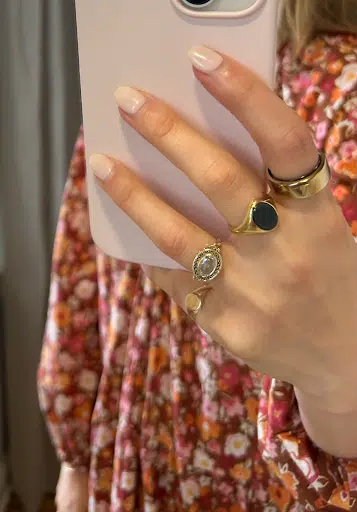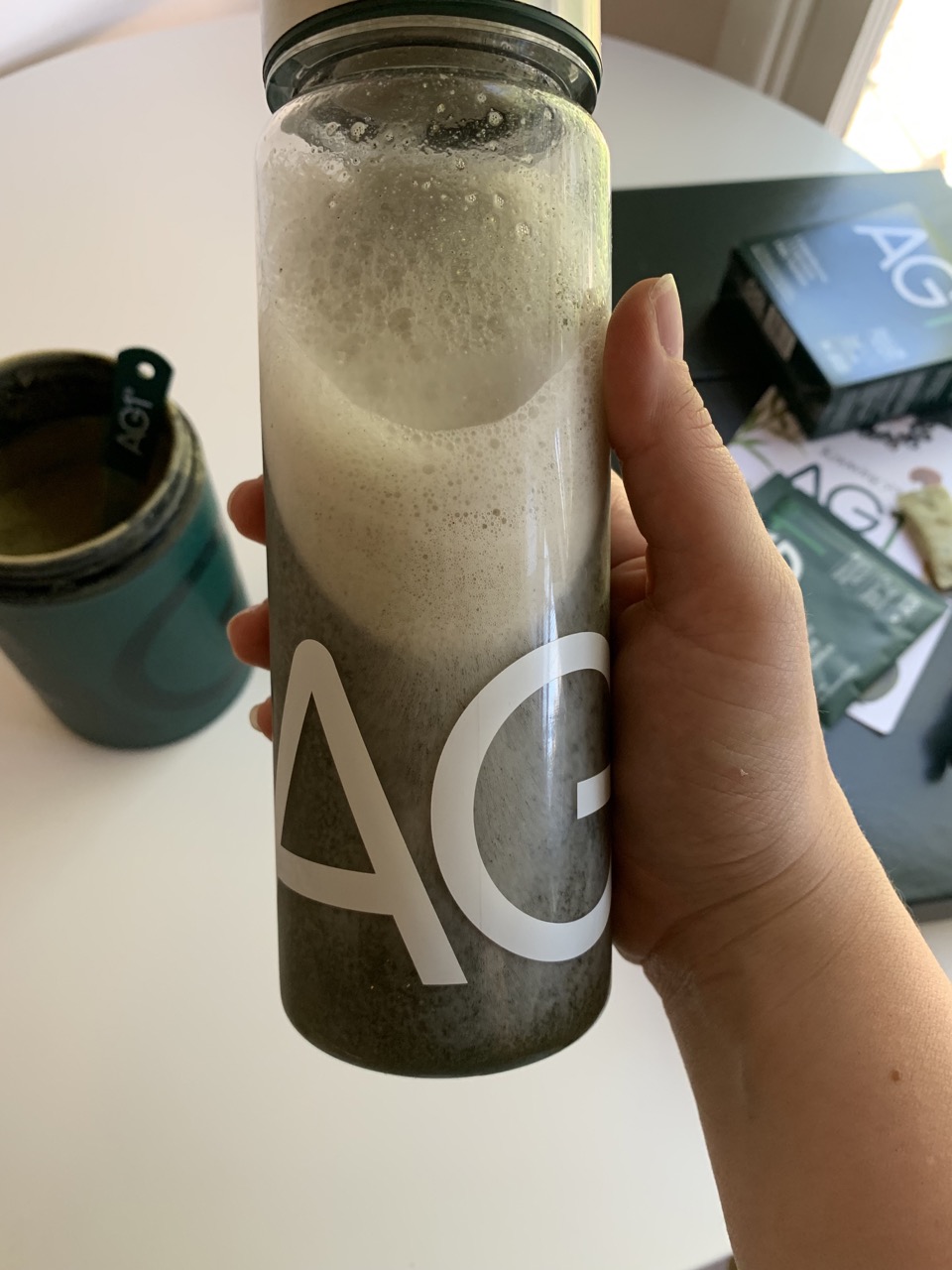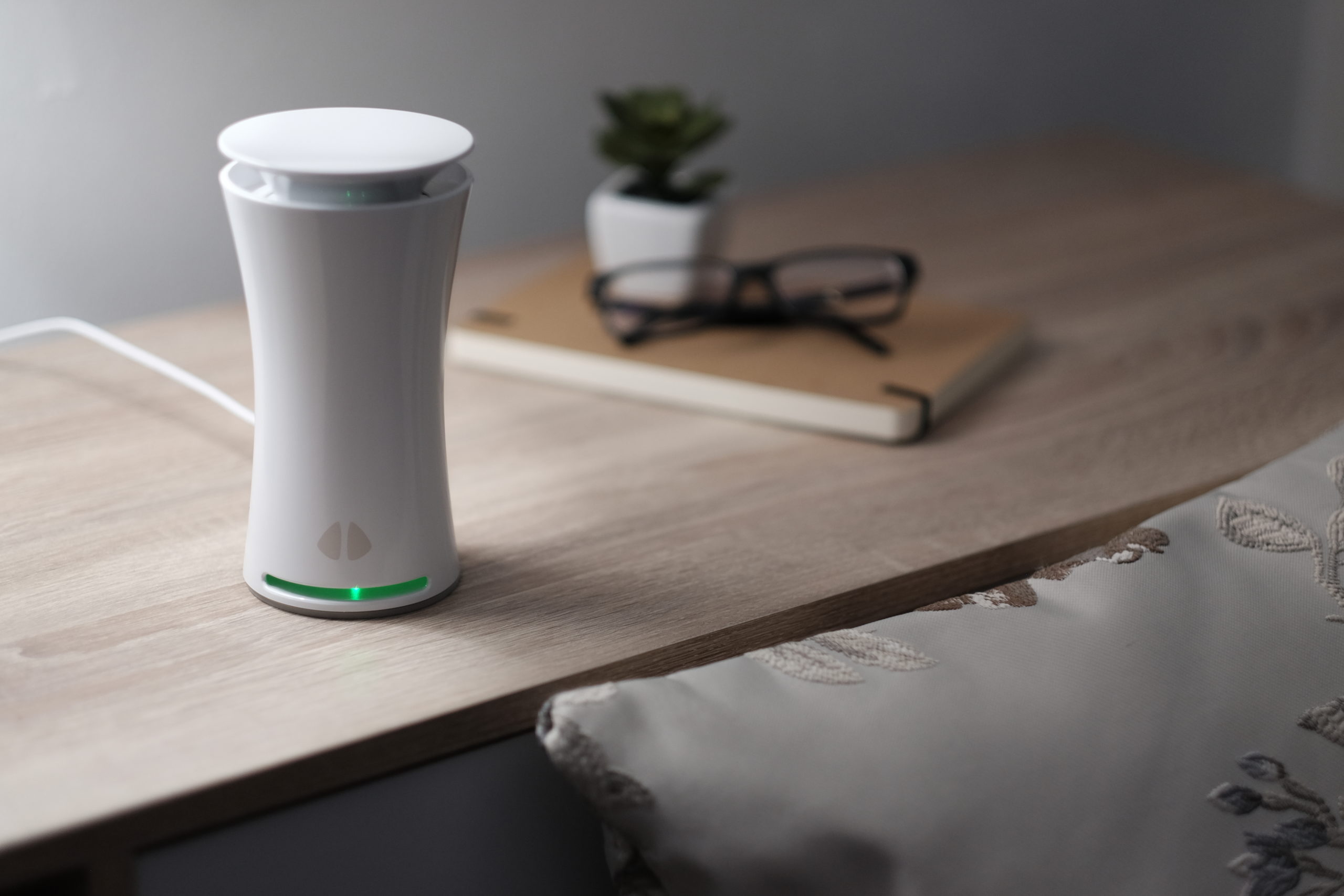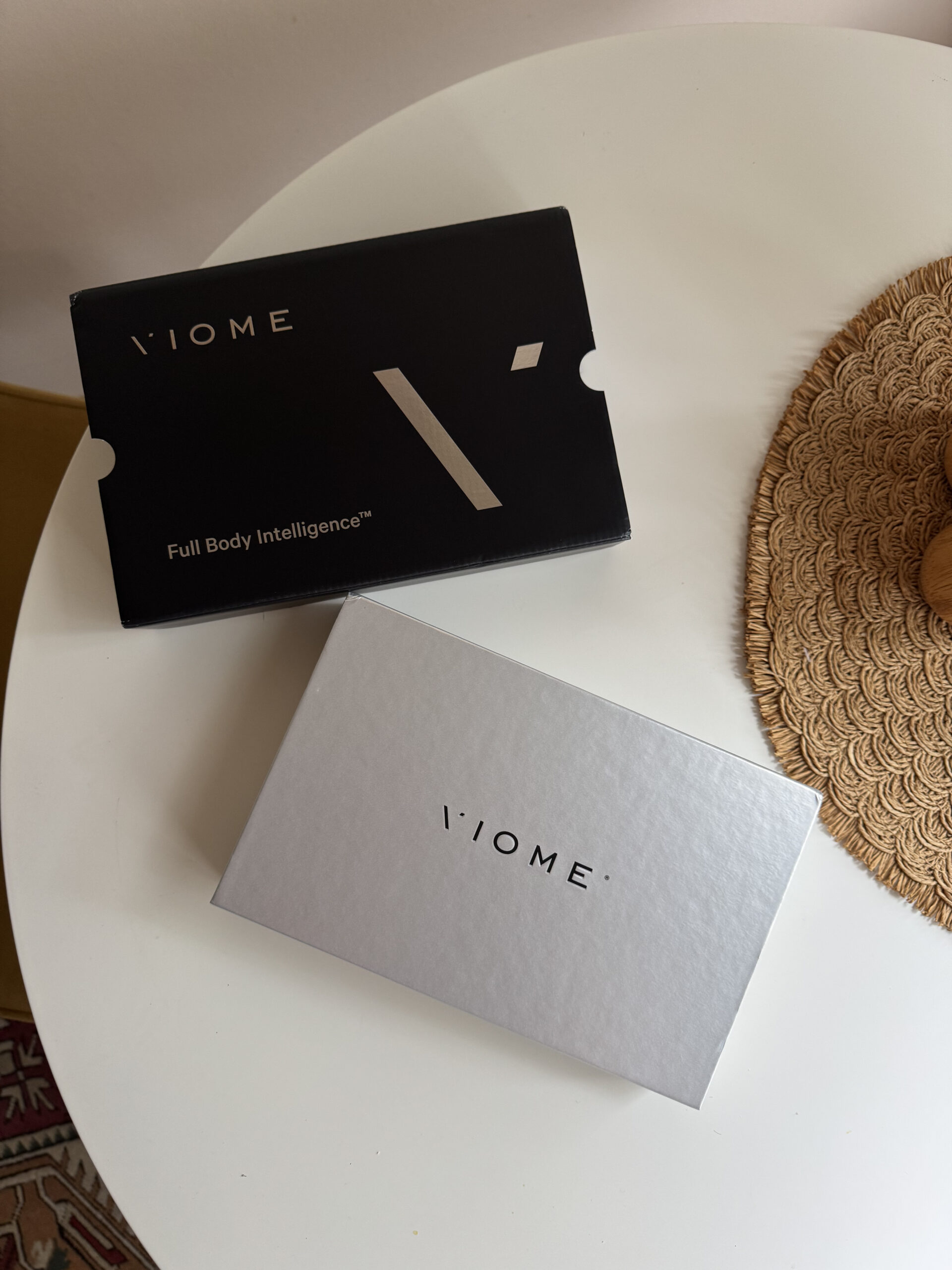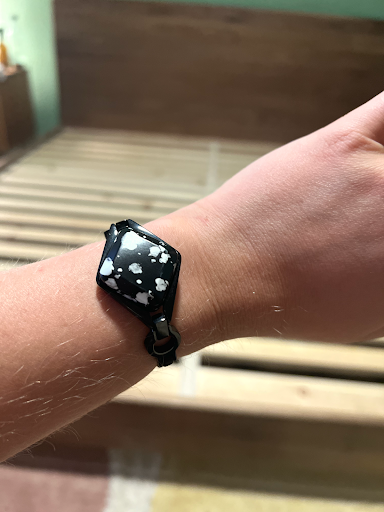
Will The Bellabeat Ivy Tracker Help Me Cycle Sync? (2024 Review)
Good Gear editors endorse products we’ve personally researched, tested, and genuinely love. Learn more about our methodology and business model here.
GOOD GEAR RATING — 6/10 STARS
Summary: After three months of testing, we enjoy the Bellabeat Ivy fitness tracker for its screen-free and chic design, as well as its cycle tracking features (which also include a week-by-week pregnancy tracking feature, which we did not use). Bellabeat is a great choice for someone who wants a more subtle tracker for steps and baseline wellness, but doesn’t want to invest in something as pricey as the Oura Ring. Its tracking is fairly simple, though, and may not be ideal for folks with irregular periods or who are not actively tracking their fertility.
PROS
- Charming, low-profile design makes the Ivy inconspicuous (lots of folks I met were surprised to hear it was a fitness tracker)
- Super easy setup, and longer battery life than trackers like FitBit and even Oura Ring
- Offers private key encryption security options to keep menstrual data only readable by you
- There’s no screen, which makes it less distracting and more aesthetically pleasing than some flashy, large-screen trackers. This also means no one else can see your steps, notifications, or stats
- Easy sleep tracking, each day upon opening the app it suggests your sleeping hours that you can then edit
CONS
- You have to manually track data like water intake, mindfulness, and food. Although that’s not surprising, I frequently forgot to track these things which made the app less helpful
- The lack of a screen can be restrictive, if you prefer a display, and makes it difficult to see your stats at a glance (updates take a few moments to sync, as long as you are in Bluetooth range)
- Not waterproof, and limited water resistance
- You have to manually enable private key encryption in order to ensure your menstrual data is protected from hacks or leaks
- After six months, the Wellness Coach feature costs $9.99 a month — though this includes meditations, exercises, custom recipes and more
The past few years of the pandemic and working from home have shown me how easily I can fall into being a sedentary person — so much so that I got a FitBit in December 2020 to encourage myself to get out of the house more. I tried my best to use it regularly, but whenever I misplaced the charger or forgot to put it back on after a shower, I’d forget about it. My stats, basically, became quite useless.
“I’ve been curious about Bellabeat, the first fitness tracker engineered specifically for women and our needs.”
But I haven’t been deterred — I’m still trying to reclaim my activity levels. I’m also trying to get more in touch with my body and my cycles in a way that’s meaningful to me; as someone with PCOS I do not have predictable periods. It’s physically and emotionally taxing to never know what’s next.
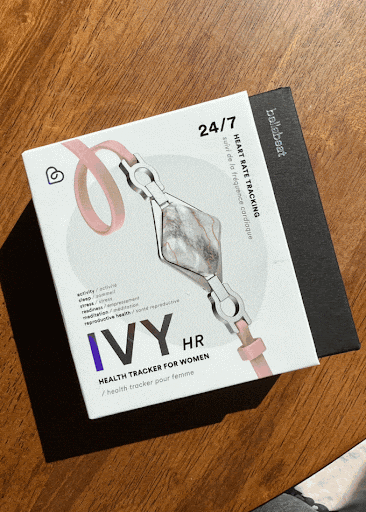
That’s why I’ve been curious about Bellabeat, the first fitness tracker engineered specifically for women and our needs. Could I finally crack the sporadic period code that’s been puzzling me since I was a teen?
Bellabeat, founded in 2014 by Croatian mathematician Sandro Mur and Slovenian sculptor Urška Sršen, received Y Combinator funding for what TechCrunch described as “a FitBit for pregnancy.” The brand has since evolved to fitness and wellness trackers for women in all stages of life. The Bellabeat Leaf Urban was the first launch, and is wearable as a bracelet or necklace, followed by the more advanced Ivy tracker that launched in 2021. The brand also sells a handful of fitness accessories, notably also the Spring Smart water bottle, which automatically tracks your hydration. (Something I want to look into, read more on that later).
Bellabeat is also known for having the first period tracking app to offer private key encryption in the wake of the overturn of Roe v. Wade. As the US government becomes more involved in women’s personal health decisions, this is so important to me in any app that tracks reproductive health. As the brand explained to FemTech World, “The implementation of the private key encryption ensures that we will never be placed in a position, as a company, where we could be forced to submit user’s private health data in its readable form.” Your information, basically, is only readable by you on your device with a code you know.
Depending on the state I lived in and who had access to my data, data about my irregular period could land me in legal trouble. Who’s to say my tracking wouldn’t look like I was pregnant — then suddenly not — every few months? Without sufficient evidence from my healthcare teams to show I didn’t have an abortion, some politicians even believe I would deserve the death penalty. While that’s the worst-case scenario, I don’t particularly want to face those odds.
“The private key encryption ensures that we will never be placed in a position, as a company, where we could be forced to submit user’s private health data in its readable form.”
– Bellabeat
I went into my journey wearing Bellabeat’s Ivy tracker with simple goals: to increase my overall activity, get a baseline view of my sleep and heart rate, and try to track my unreliable period in a safe(r) environment. Here’s what I’ve learned using Bellabeat for three months, and what I’ve liked, and what I haven’t.
First impressions of Bellabeat Ivy
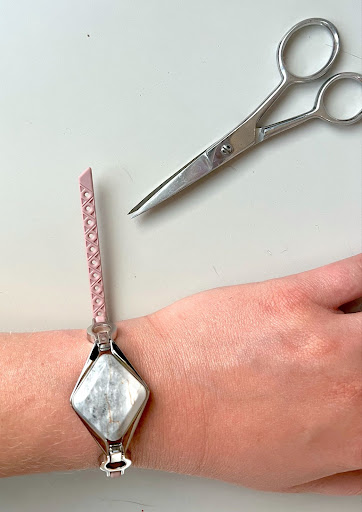
The Bellabeat Ivy is a mid-range fitness and wellness tracker that comes in several different styles and is accompanied by a free app for tracking. Priced at $249, this tracker also comes with the first six months of Bellabeat Wellness Coach which includes custom wellness tips, exercises, meditations, and recipes. After six months, the Wellness Coach costs $9.99 a month but the core functions of readiness scores, wellness scores, and diary always remain free. There is also a 30-day money back guarantee if you’re not satisfied, as well as a one-year warranty.
“Unboxing and setup was simple — a USB-based charger, wrist straps, and the Ivy tracker itself alongside a user manual.”
Unboxing and setup was simple — a USB-based charger, wrist straps, and the Ivy tracker itself alongside a user manual. Its compact size would make it a cute, luxe stocking stuffer. All I had to do was charge the device until it was full, and it connected easily to the Bellabeat app via Bluetooth. (Note: the Ivy has a battery life of 7–10 days on a full charge).
I then clipped on the wrist straps, and trimmed the longer edge of the strap down to fit at my ideal length. Take your time deciding on a comfortable length to trim your wristband, as I think I trimmed mine just a little too short for my liking. Replacements are $29 if you need one. (When I got my Fitbit, it’s worth noting, it came with a spare wristband for no extra charge.)
From my experience, I recommend you add the straps before charging! The tracker is small (weighing only .35 ounces) and if it drops off the charger, it can be tricky to find. I lost mine for two days after it bounced into my rabbit’s play tunnel, and only found it thanks to a Bluetooth finder on my phone. Thankfully, that was recommended in Bellabeat’s help center.
“The tracker is cute and would look great stacked with bracelets if that fits your aesthetic better than a tracker with a screen.”
In regards to the Ivy’s design, I initially thought the marbled stone on top was just that — some sort of stone. Instead, it’s a veneer designed to look like stone. Still, the tracker is cute and would look great stacked with bracelets if that fits your aesthetic better than a tracker with a screen. I do wish there was a way to swap out the cover of the tracker with different styles!
What does Bellabeat track?
Bellabeat is a versatile tracker that monitors some statistics automatically, and others are self-reported in the app itself. Here is what the tracker automatically tracks:
- Steps taken
- Distance walked
- Calories burned
- Active minutes
- Sleep duration and quality
- Menstrual cycle tracking (based on self-reported info)
- Heart rate and resting heart rate
- Overnight respiratory rate and cardiac coherence
And here is what you have access to tracking in the app itself, although you have to self report:
- Stress levels
- Meditation sessions
- Mood tracking
- Hydration (water intake)
- Food intake and nutrition
- Workouts, exercises
- Current heart rate
The Bellabeat app itself is a fun and engaging user experience, although to get to some stats (like cardiac coherence), you need to go to “Readiness” rather than the initial dashboard. Most statistics are available at a month’s overview but not all, so it can be difficult to see your overall trends over time.
It is easy enough to open the app and quickly track hydration or a meditation session (the app even offers sessions). I will note that the hydration quantities do not feel familiar or standardized to me since the “quick-track” buttons are 3oz, 7oz, 10oz, 17oz, 34oz. Where is my 8oz?? I also tend to forget to track my hydration, which is why I’m intrigued by the brand’s Spring water bottle, a fully dishwasher-safe smart bottle that tracks your water intake automatically.
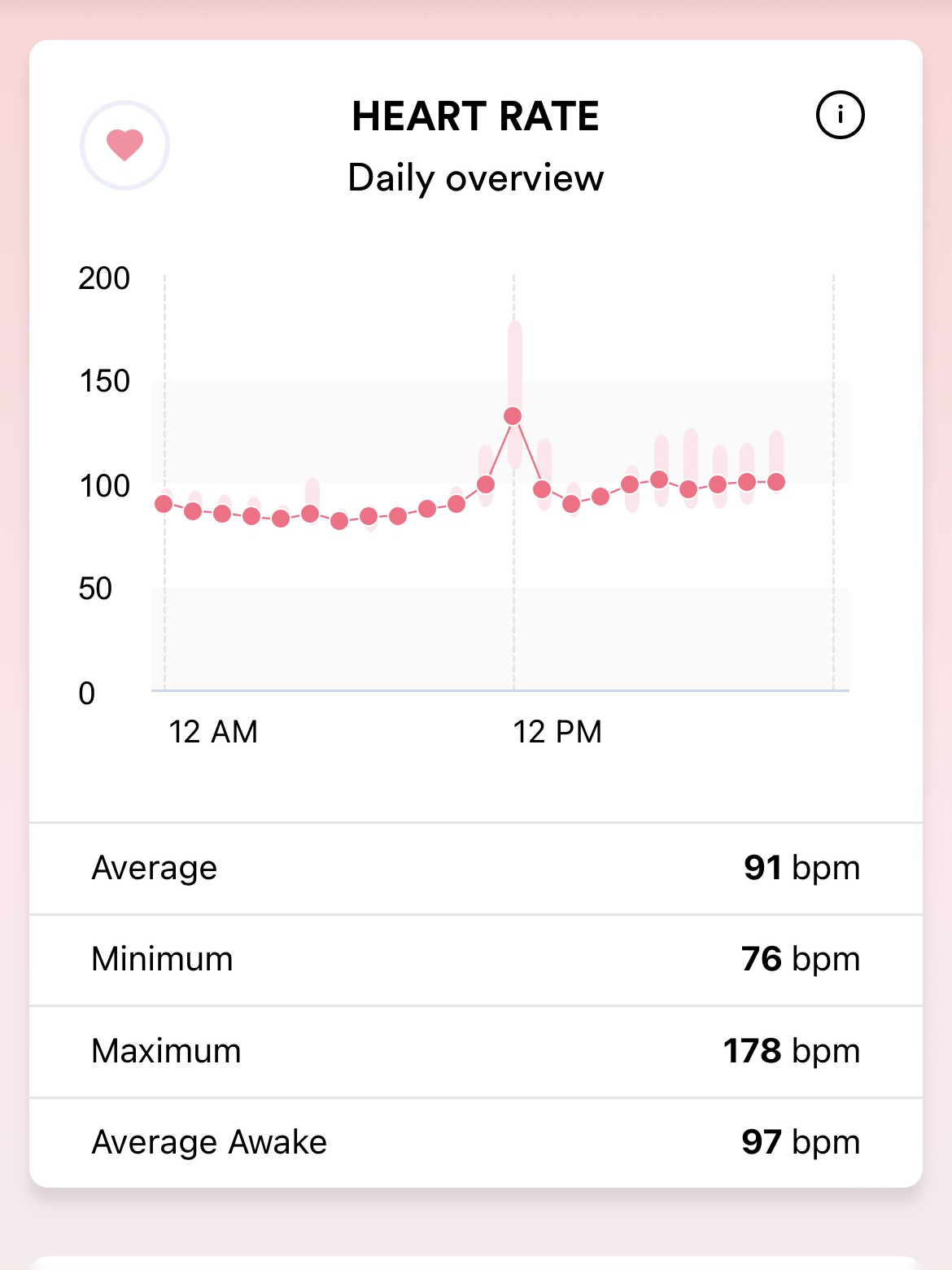

I had some issues with the menstrual tracking, because the app only offers you a window of 15–40 days to select for your cycle. Mine, I’m starting to learn, is more like 60-90 days and I’m not even on hormonal birth control. Would we even call that a cycle at that point? *Sigh* I’ll just keep having to bother my doctors for answers.
“What truly stands out about the Bellabeat app is its content library.”
What truly stands out about the Bellabeat app is its content library which includes guided meditations, workout routines suitable for various fitness levels, healthy recipes and nutritional tips, and more wellness resources. (I even found a recipe for a DIY nontoxic hair mask!) The app recommends superstar ingredients for you to eat each day based on your readiness score and where you’re at in your menstrual cycle, alongside helpful tips and information on what’s happening in your body. (There’s a pregnancy journey library, too, which I didn’t use but found interesting.) Note that some of these more custom recommendations are looped into the Wellness Coach which costs $9.99 a month after the first six months.
Is Bellabeat secure?
Bellabeat is secure for the most part, and it also depends on which privacy features you have enabled. After reading through the brand’s privacy policy, I had a few additional questions which their team answered thoroughly for me.
“If you enable private key encryption (PKE), your menstrual data will be unusable/unreadable to anyone other than yourself.”
Here’s what I learned: If you enable private key encryption (PKE), your menstrual data will be unusable/unreadable to anyone other than yourself. Other data, such as sleep and activity records, is not covered by PKE just yet, although that is currently in the works. If you enable PKE, all of your current and historical data will be encrypted and unreadable to anyone other than you as the user. You can also delete your account and data immediately upon request. But you have to manually enable PKE by updating it in your app settings.
Did Bellabeat help my period tracking?
So…no. But also yes, in a way. I finally realized that my cycle ranged from 30–60 days just in the four months I’ve used the device. Other times, I know that I’ve had 90 or more days between bleeds.
“The physical reminder of the device on my wrist helped me finally track the dates I bled.”
The Bellabeat app gave me a scrolling list of options for how long my cycle would be — from 18 days to 40 days, which excluded me from the regular tracking capacity. Ultimately I say Bellabeat’s tracking helped, because I decided to discuss my cycles more in-depth with my doctor and opt for a method of birth control that ultimately makes me feel more in control — and more in tune — with my body. I fought for so long trying to become “normal” that I ignored what has been normal for me my entire life. I’m not looking to conceive, so I do not have that specific need for Bellabeat’s cycle tracking, but I imagine it might be more helpful for folks with regular cycles who are looking to get pregnant.
The physical reminder of the device on my wrist helped me finally track the dates I bled — which helped me make decisions about my reproductive health with more confidence.
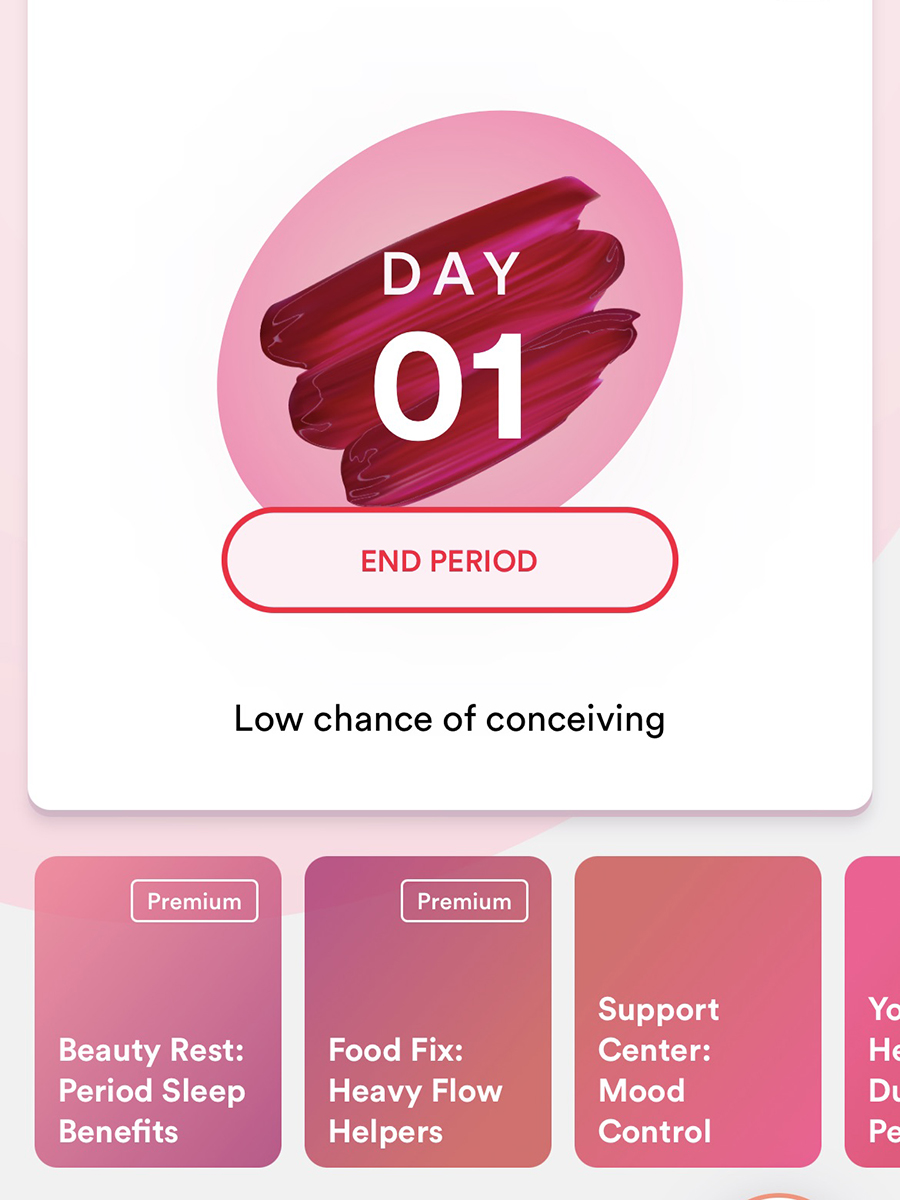
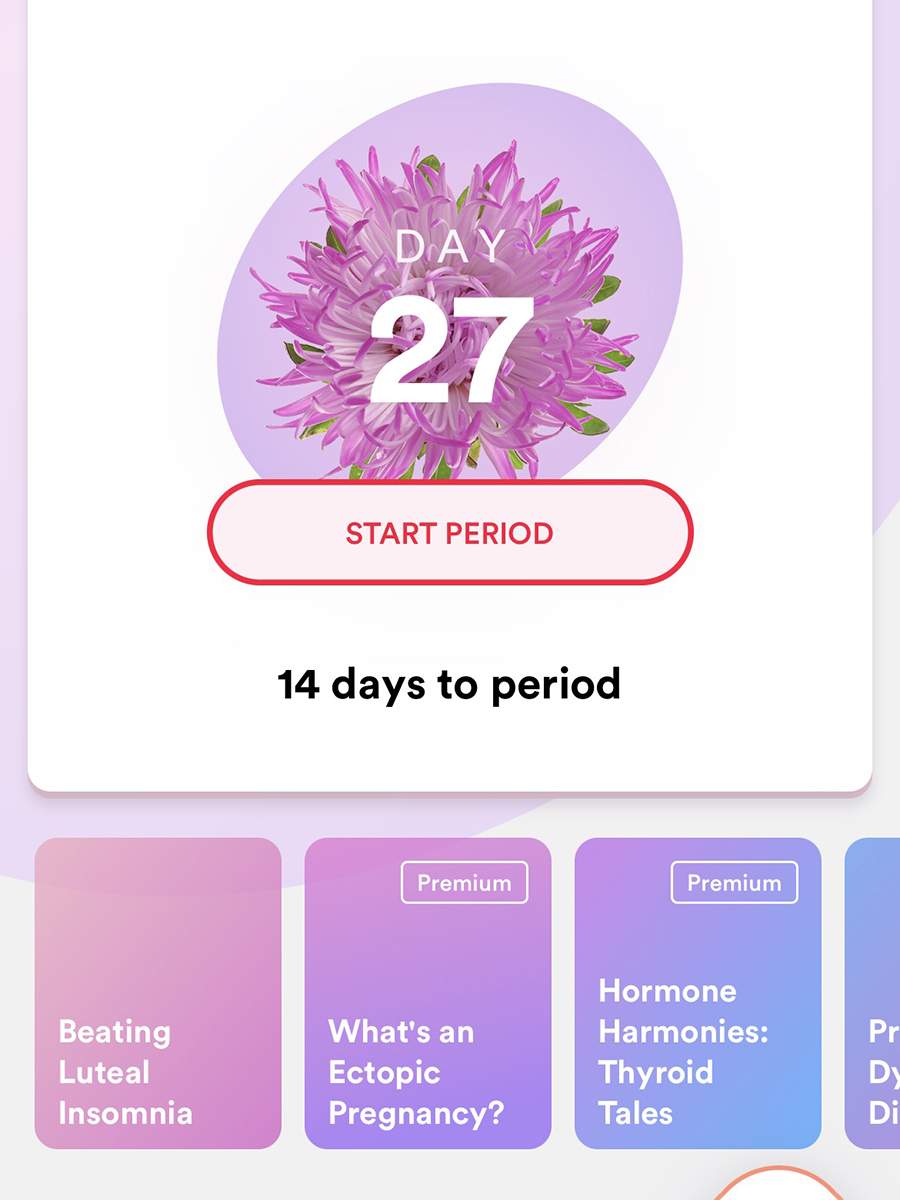
Final thoughts about Bellabeat
My overall thought about the Bellabeat Ivy tracker is that it’s a good device — for the right person. Bellabeat will work best with folks who are diligent in their routines and habits (like tracking daily moods and hydration) and want to learn a little more about their baseline without getting overwhelmed with data. It’d be a good intro to fitness trackers, as all of the interface is on the app rather than having to interact with a tiny screen on your wrist; plus, it is nice to have just one less screen to deal with.
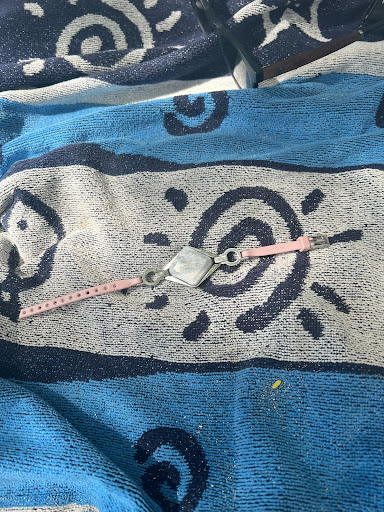

Bellabeat’s app combines features you might get across several other apps, so it helps consolidate things like meditations, breathing exercises, recipes, and period tracking. No need for individual separate subscriptions, although it’ll cost you $10 a month after the first six months. With all the data it kind of feels like a little personal wellness assistant which is fun!
“My overall thought about the Bellabeat Ivy tracker is that it’s a good device — for the right person.”
However, I am not someone who is diligent at tracking, and often forget to log my data. I also forget to put the Ivy back on after I take it off to swim or shower (as recommended by Bellabeat). My own inconsistency made the app less helpful for me, so if your brain works like mine this might not be a good fit.
But if you’re self-accountable and looking for a chic, low-profile tracker designed for menstruating folks? I say Bellabeat is a good place to start.
Emily Torres is the Editorial Director at The Good Trade. Born and raised in Indiana, she studied Creative Writing and Business at Indiana University. You can usually find her in her colorful Los Angeles apartment journaling, caring for her rabbits, or gaming.

